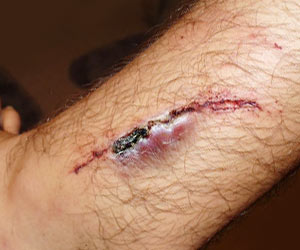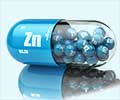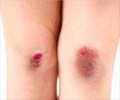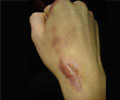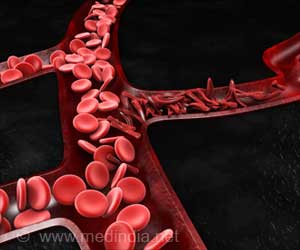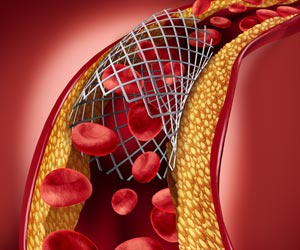Lignin-based hydrogels exhibit advantageous properties, such as enhanced strength and bioactivity, making them highly suitable for wound healing and controlled drug release.

‘Lignin-based hydrogel exhibited antimicrobial effectiveness against Staphylococcus aureus, a common wound infection pathogen, underscoring its potential for infection control. #Lignin_basedHydrogel #woundhealing #medindia’





A recent study by Bowei Wang et al., published in the Journal of Bioresources and Bioproducts, presents a breakthrough in lignin-based hydrogels designed to combine mechanical strength with bioactivity. This research reveals a controlled-release polyvinyl alcohol (PVA) and chitosan (CS) hydrogel, augmented with sulfonated lignin, which could revolutionize the treatment of complex wounds and enable sustained drug release (1✔ ✔Trusted SourceA lignin-based controlled/sustained release hydrogel by integrating mechanical strengthening and bioactivities of lignin
Go to source).
Healing Power of Lignin in Medical Applications
Lignin, a renewable byproduct in the paper and biorefinery industries, has gained attention for its inherent antimicrobial and antioxidant properties, which are essential for promoting wound healing. However, high concentrations of lignin in direct applications often lead to biotoxicity. Addressing this limitation, the team developed a hydrogel network with non-covalent interactions (including van der Waals forces, hydrogen, and electrostatic interactions) to incorporate lignin safely and effectively. This structure ensures the slow and controlled release of lignin in response to environmental pH changes, specifically targeting wound environments with fluctuating pH levels due to bacterial infections.Role of Lignin in Wound Healing and Drug Delivery
The mechanical performance of this hydrogel was notably enhanced. Compared to traditional PVA-CS hydrogels, the lignin-infused hydrogel exhibited a tensile strength of approximately 36 kPa and a compressive strength of 900 kPa. These values mark a substantial improvement, positioning the hydrogel as a suitable candidate for load-bearing wound dressings. The non-covalent interactions within the hydrogel network enabled energy dissipation upon mechanical stress, further increasing its durability and potential applications.Beyond mechanical properties, the hydrogel demonstrated significant biological compatibility. In vitro tests showed high cell viability, with the hydrogel actively promoting cell proliferation without observable toxicity. Reactive oxygen species (ROS), which are elevated in inflamed wound environments, were effectively scavenged by the lignin in the hydrogel. This antioxidant activity reduces oxidative damage and supports faster tissue regeneration. The hydrogel also showed antimicrobial efficacy against Staphylococcus aureus, a common pathogen in wound infections, reinforcing its potential in infection control.
The study’s findings indicate that lignin-based hydrogels can serve as a cost-effective, biocompatible, and mechanically resilient solution for wound healing applications. Furthermore, the controlled and pH-responsive release properties make this hydrogel an ideal candidate for sustained drug delivery, reducing the need for frequent medication application and minimizing side effects associated with high drug concentrations.
Advertisement
Reference:
- A lignin-based controlled/sustained release hydrogel by integrating mechanical strengthening and bioactivities of lignin - (https://www.sciencedirect.com/science/article/pii/S2369969824000732)
Source-Eurekalert

